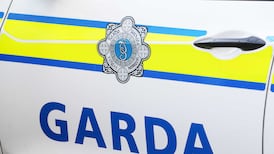A jury in Scotland has found a man guilty of killing his mother from Dublin at the end of a trial which heard that the woman was beheaded and dismembered and buried in a shallow grave. James Dunleavy (40), also known as Séamus Dunleavy, had denied murdering Philomena Dunleavy (66).
Yesterday the jury at the High Court in Edinburgh convicted him, by a majority, of a reduced charge of culpable homicide. They also found him guilty of the attempted cover-up. As Dunleavy was led to the cells, his family gave him the thumbs-up and offered words of encouragement.
Judge Lord Jones ordered Dunleavy to remain in the state hospital, Carstairs, while psychiatrists continue to assess his condition. He is due back in court in April for the judge to decide the next move. Lord Jones told him: “You are required to be detained under conditions of such security as can be provided in the state hospital.”
Three psychiatrists told the trial that Dunleavy clearly had problems – although it was too early to say exactly what it was. Paranoid schizophrenia was suggested as a possibility. Dunleavy, giving evidence, insisted the doctors were wrong. “I think the gravity of the crime I am accused of may have coloured their perception,” he suggested. “They are entitled to their opinion.”
Carole Ross gave evidence that Ms Dunleavy had come into Edinburgh’s Portobello police station where she was working, asking for a cheap room. She said she did not want to be with her son because he was having “an episode.”
Matthew Hagan, who worked alongside Dunleavy on Edinburgh’s tram project, told how his workmate told him just days before his arrest: “I have done something bad, brother.”
Ms Dunleavy, from Marino, Dublin, a mother of five, was described as small, slightly built and shy. She had left her Dublin home in early April last year and arrived in Scotland on April 24th to visit her eldest son. Prosecutors alleged that, days later, she was killed in his flat in Balgreen Road, Edinburgh.
Following the discovery of her dismembered body, CT scans of the skull, combined with computer technology, enabled Dundee University’s craniofacial expert Dr Caroline Wilkinson to produce a likeness of the dead woman.
The trial heard that Ms Dunleavy, who suffered from a number of medical problems and had been badly affected by a stroke, had a habit of wandering without telling anyone where she was going.
By early July, though, her family in Dublin were beginning to wonder where she was. Dunleavy had phoned on May 2nd to say she was on her way home, but his mother had, apparently, never arrived. A call was made to police in Edinburgh, followed by a call on July 3rd from Dunleavy himself. Police visited him the following day.
Four days later he was charged with her murder.
It was more than a month before Ms Dunleavy’s body was unearthed, just a few minutes walk away from her son’s address. A large suitcase was missing from the flat and a spade with a broken shaft was found in the back green.
Ms Dunleavy’s husband James (68) remained silent as the eight women and seven man reported their decision. Also there was brother Austin (27), who is close to completing a football scholarship, studying history in the US. Another brother Terence (27) was shot dead in Dublin in April 2005. A sister had also died.
As the verdict was read out, Dunleavy stared straight ahead and showed no emotion. As they left the High Court in Edinburgh, Mr Dunleavy snr simply said: “I will not be making any statements.”
The trial heard that after Ms Dunleavy’s body was found, the family was asked to help police investigating her death.
Police launched Operation Sandpiper, appealing for help to identify the body. At first the expensive cosmetic dentistry, carried out in Hungary, led them to consider the possibility of a migrant worker from Eastern Europe.
Ms Dunleavy’s Claddagh ring took the search to Ireland.










